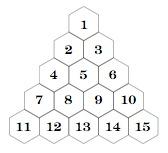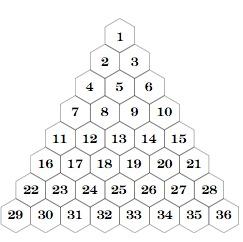Sorting the numbers
Problem

Complete each jigsaw and then put the pieces into the outline squares, which can be printed from here.pdf.

2. Place the smaller square of numbers on top of the other larger square in any way you like so that the small centimetre squares match up. (You may find it easier to copy the numbers on the smaller square onto a transparent sheet.)
3. Explore what happens when you add together the numbers that appear one on top of the other.
4. In your group, explore any other ideas that you come up with.
When you've looked at the thirty six combinations then you probably need to ask, "I wonder what would happen if we ...?". Change one small thing, explore that and then compare your two sets of results.
You might like to ask, "Why ...?".
Getting Started
Why are these relationships occurring?
What happens when you rotate the smaller/larger square?
What happens when you shift the smaller/larger square up or down?
Student Solutions
We had some interesting responses from St. James School in Southam. UK.
James, Mathieu, Morgan and Stephen wrote:
On the large square you add $8$ to each column and on the smaller square you add $6$ each time.
Alex, Isaac, Matty and Emil wrote:
$+8$ downwards, $+9$ diagonally right downwards, $+7$ diagonally left downwards
Lauren, Zoe, Jade and Katie:
The first box is equivalent to $22$, and then we discovered that if you plussed $8$, then that would be your next boxes answer! Following through right until the end of the larger square!
Finally from Leeds in the UK who sent in several neat thoughts, here's just one;

Whilst this was all we had sent in it is probably the case that many of you did some interesting thinking about this but you felt that there was not anything that you could write into an email. Remember that whatever pieces of work come about from the starting point we are interested. LATE LATE NEWS:- Thank you Lady Elizabeth Hastings Primary School, Ledston for a truly wonderful response.
Teachers' Resources
Why do this problem?
Many NRICH tasks have been designed with group work in mind. Here we have gathered together a collection of short articles that outline the merits of collaborative work, together with examples of teachers' classroom practice.
Possible approach
Key questions
Possible extension
Image

|
Image

|
You can print these triangles here.
